France’s rugged Atlantic coastline is a popular and challenging cruising ground, but it was not so long ago that countless fleets of small workboats called its remote harbors and rocky estuaries home. These traditional voile-et-aviron (sail-and-oar) boats inspired the French naval architect François Vivier to design boats like the Morbic 12, the Ilur, and a host of others. Like the Ilur, the Morbic 12 has become very popular in France, and in the last few years has attracted the attention of small-boat builders and sailors in the United Kingdom. The Morbic 12 is one of a series of Morbics that includes 8′ and 10′ lengths as well as an 11′ strip-planked version. The Morbic 12 has become a favorite with builders wanting something similar to the 14-1/2′ Ilur but a little smaller and easier to store and transport.
Vivier designed the Morbic 12 with the International 12 in mind. A hugely popular racing dinghy and tender for larger boats dating back to before the First World War, the International 12 set the standard for smaller sailing dinghies for many years around the U.K. and Europe. The Morbic 12 was inspired by both the older competitive 12′ racing dinghy class as well as the traditional inshore fishing boats once ubiquitous around Brittany. It has more beam and freeboard, comfortably carries a crew up to three, and is capable of coastal cruising under sail, oar, or even a small outboard. The construction manual is suited for those with some prior experience in modern glued-lapstrake construction; a novice builder might need expanded guidance for each step. I found Eric Dow’s 1993 book, How to Build the Shellback Dinghy, which I had used when I built a Shellback, a useful reference during the construction of the Morbic’s hull.
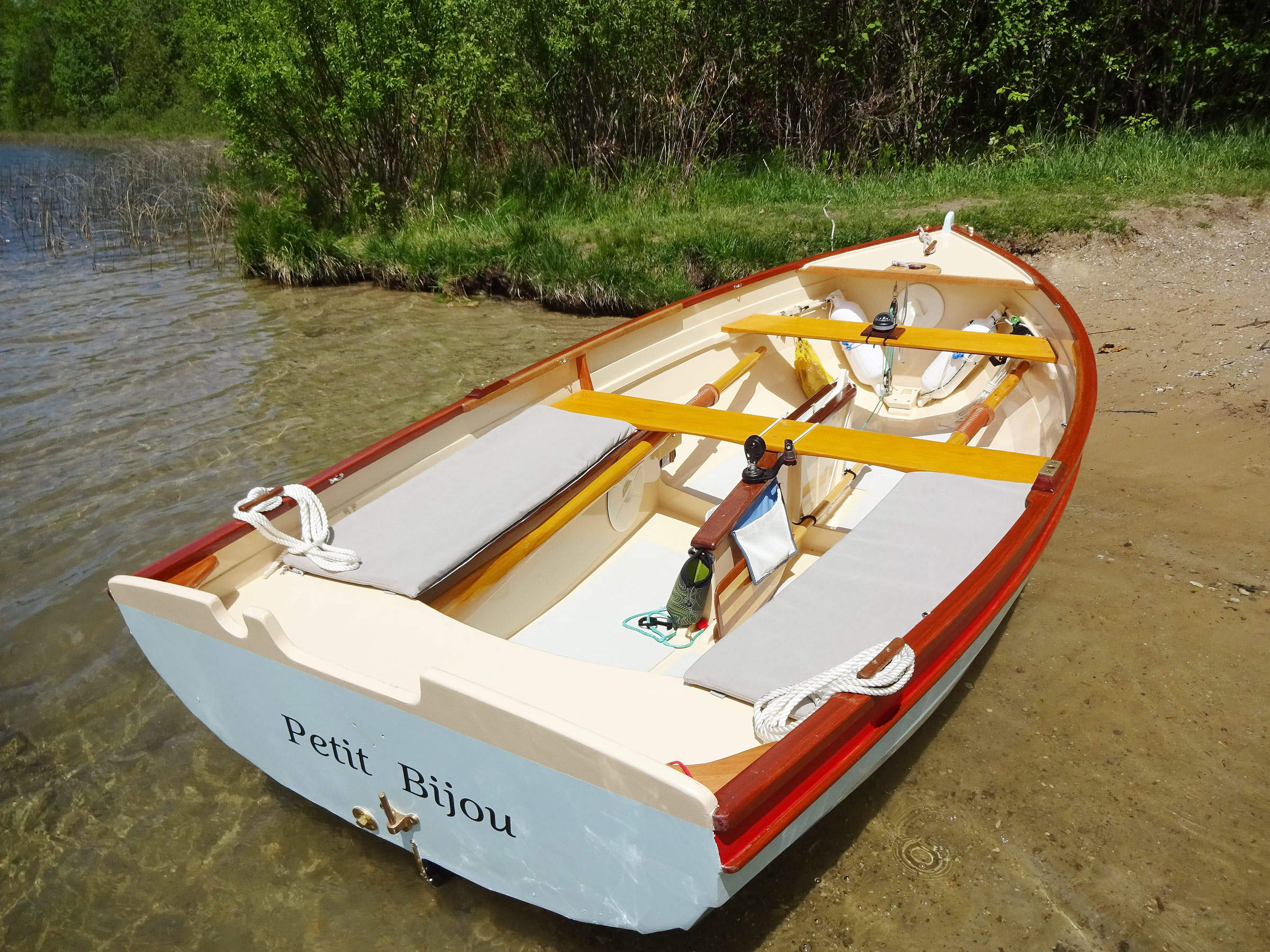 Photographs by Patricia Wisdom
Photographs by Patricia WisdomThere are buoyancy chambers under the foredeck and each of the side benches. The oars stow out of the way on the sides of the chambers. To the port side of the transom’s outboard cutaway there is a smaller notch for sculling.
I ordered the boat as a kit from Chase Small Craft, Vivier’s U.S. partner. It includes pretty much everything you would need to complete the boat: plans, CNC-cut plywood parts, shaped solid wood pieces, hardware, ’glass cloth, and resin. Additional kits provide sails, paint, Shaw & Tenney oars, and optional carbon-fiber spars.
The glued-plywood lapstrake hull is built on a chipboard strongback and building frame that’s included in the kit. Five temporary chipboard molds plus three permanent 6mm okoume plywood frame sections constitute the strongback’s form for supporting the planks. The okoume sections form the transom, center bulkhead, and forward bow compartment. The false stem is constructed from both 10mm sapele marine plywood and solid mahogany stock provided with the kit. Two 6mm longitudinal bulkheads form the rear watertight compartments and allow easy attachment for the two-layered 10mm transom. Puzzle joints make gluing the two-piece sole, garboards, and five strakes a quick and easy operation. The hull can be planked rapidly with little fuss, especially if a second pair of hands is available. Due to the designer’s approach to simplifying construction, many of the plywood pieces that are part of the building form remain incorporated in the hull. This not only means that much of the interior is already built prior to flipping the hull, but also a lot of the labor associated with plank-on-frame construction is minimized. The Morbic 12 is not a difficult boat to build. An intermediate or advanced beginner can expect to spend around 350 to 400 hours to finish the boat.
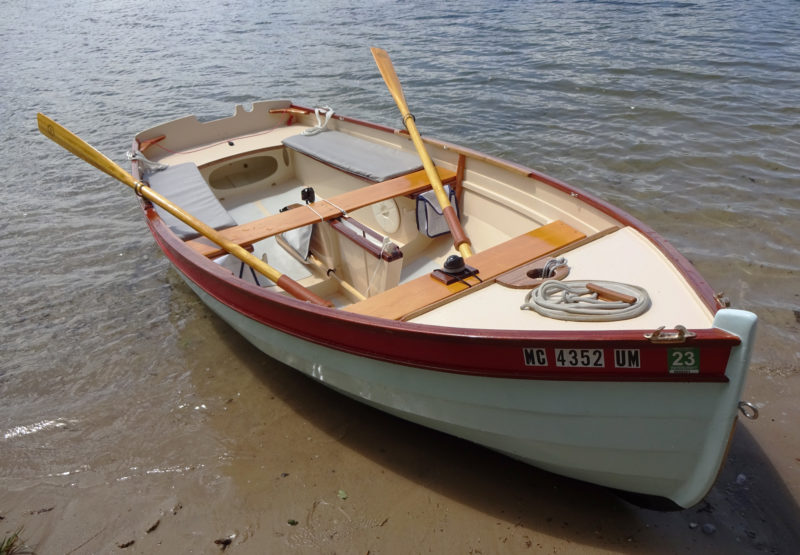
The large oval opening in the aft bulkhead provides easy access to a storage space under the seat that’s fixed to the transom. The smaller vertical opening is for the blade of an oar when stowed.
With its three built-in flotation chambers, the Morbic 12 is easily righted by a single sailor if capsized, and compliant with the European Recreational Craft Directive. The boat is rated as a Directive’s Category-C vessel, suitable for coastal waters where one can expect up to Force 6 winds and waves up to 2 meters. Not bad for a small boat, though I tend not to press my luck in such conditions—I sail singlehanded most of the time.
Another unique design characteristic of the Morbic 12 is that the centerboard is constructed from two glued panels of 10mm sapele and, if desired, is removable for transport. While sailing it is held under tension by a bungee cord that keeps it either fully down or up as needed. A spruce bird’s-mouth mast is standard and included as part of the spar timber kit. The mast is mounted by inserting it through a cutout in the forward deck and locked into place at a maststep epoxied to the boat’s sole. The kick-up rudder is also constructed from two 10mm sapele sections and is weighted with 1.2 kilograms of lead placed in a CNC-cut oval section in each blade blank.
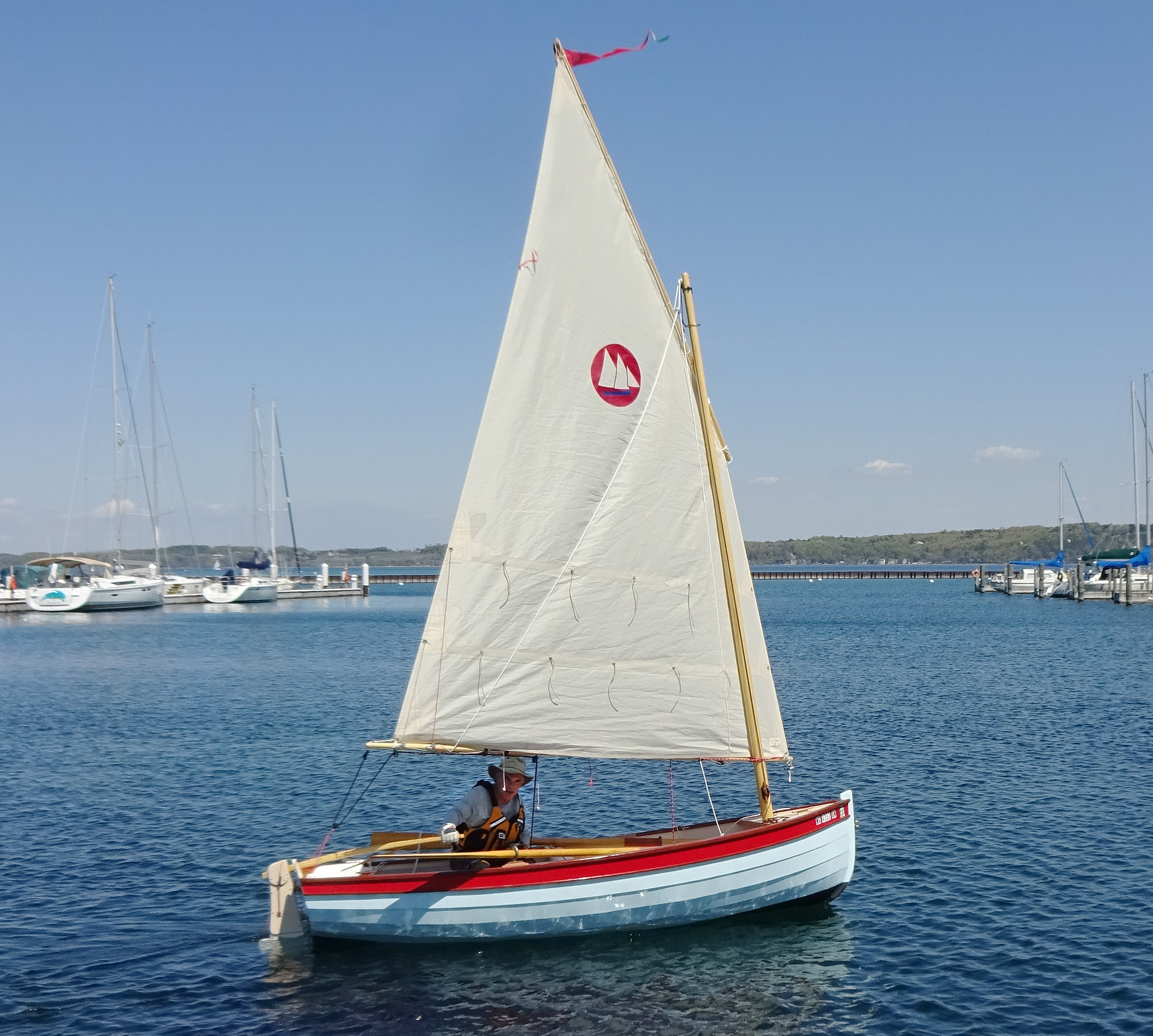
The lugsail-with-boom rig carries an 82 sq ft sail. There are three other rigs: the lugsail without a boom, with a jib, and with a curved and battened leech.
The Morbic 12 can be built with three different lugsail rigs: a traditional boomless misainier rig, popular with traditionalists; a balance lug with boom and either a battened or battenless lug sail; or a sloop version that can also be converted to a lug rig by [leaving the jib off and] moving the mast forward to the foredeck’s cutout for a lug rig mast.
The mast, yard, and boom store easily within the cockpit for trailering or rowing and are quick to set up; the Morbic’s simple lug rig can be set up in as little as 15 minutes.
The unstayed sloop version will take a little bit longer to rig. A 36″ bowsprit will have to be installed on a foredeck into a samson post’s mortise. Unlike the lug rig, the sloop version includes the option of two mast partners, which allow the rig to be quickly converted to a balance lug rig by simply dropping the jib and moving the mast forward.
The Morbic 12 feels more like a 13- or 14-footer; it stiffens up quickly and easily handles any point of sail. It steers with very little effort and has just enough weather helm to round up for safety’s sake in any unexpected gusts. With the boom’s 3:1 downhaul well-tensioned and the luff taut, the Morbic sails tight to the wind and if you drop off a degree or two and build up some speed, it easily tacks through 90 degrees. The boat responds well to choppy conditions and displays no tendency to pound or take much water over the bow. I attribute this to its generous freeboard, firm bilge, and light weight.
The Morbic 12 effortlessly rides over waves and has no problem making up to a GPS-measured 5 knots in 10 to 12 knots of wind in flat water. In gustier conditions it remains stable and easy to control, especially with the movable ballast of an additional crew member out on the rail. Sailing singlehanded, I rarely have to reef as long as I sail the boat flat and keep the downhaul very tight. Once the wind pipes up to around 12 knots, it is time to put in a reef. After all, it is a sailing dinghy. Reefing is easy: you just pull up the centerboard, let the mainsheet go free, and the boat will simply stop. Drop the rig into the boat and tie in the reef, re-hoist, and sail off. To keep the yard from ending up in the water I’ve added lazyjacks to keep it and the sail over the boom when lowering the rig. Since I prefer to reef with the sail not piled in the cockpit, I installed a simple jiffy reefing system that is quicker and less liable to clutter up the limited working space within the boat.
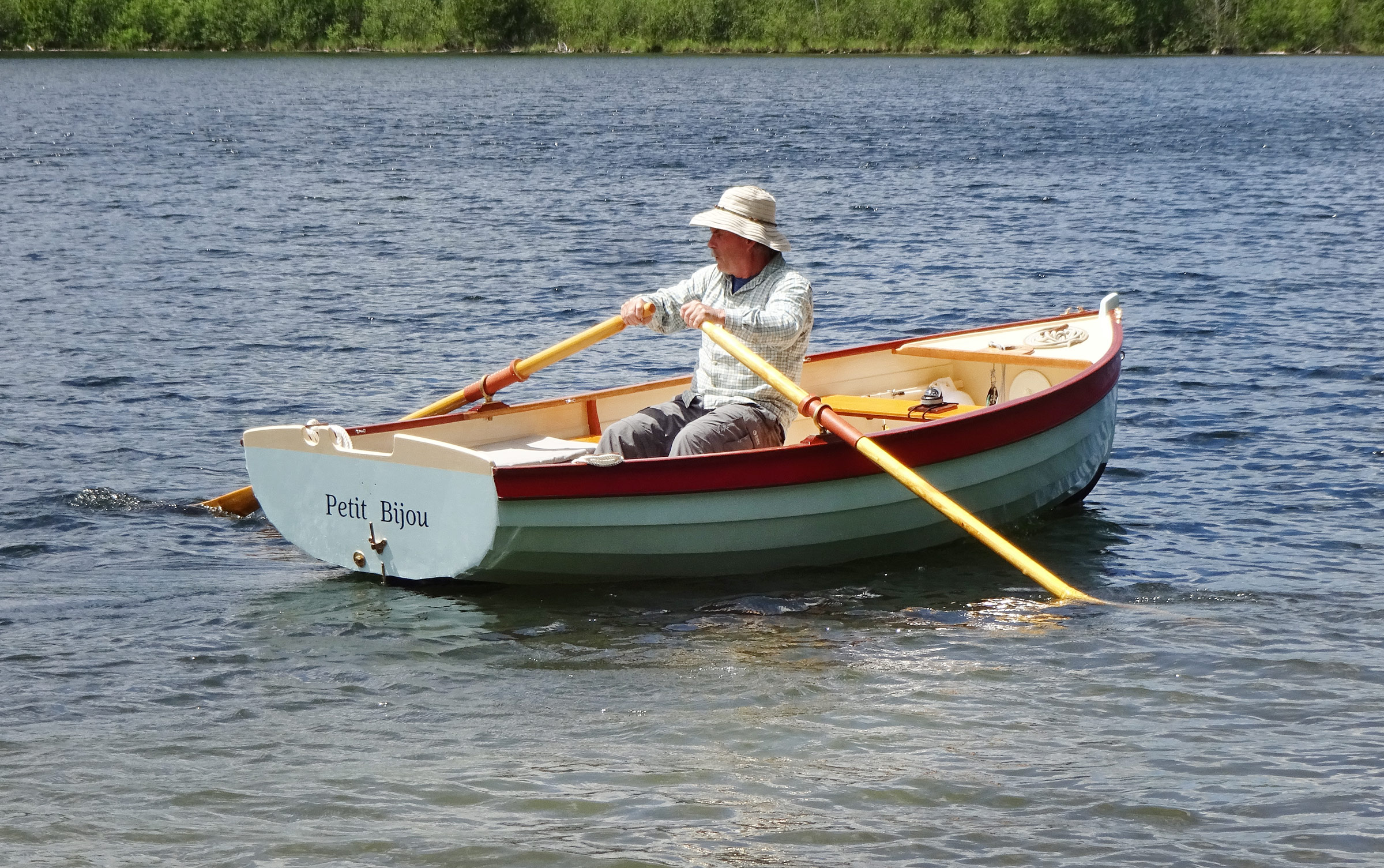
The author’s boat is currently outfitted with a single rowing station. The plans detail a second rowing station forward.
The Morbic 12 plans come with instructions for building oars specific to each of the rowing stations located at the middle and forward thwarts. The boat can also be very easily sculled using the semicircular notch in the port side of the transom. Overall, I find the Morbic’s light hull is easily propelled with standard 8′6″ oars, even with the weight of the sailing rig and other gear aboard. The plans call for 8′9″ oars for the center rowing thwart and include a cleverly designed oar storage area alongside each bench seat with the blades locked into a dedicated cutout on either side of the storage area below the aft deck. The Morbic 12 is a pleasure to row and moves through calm water with very little effort. In a lot of wind and unsettled water, however, the Morbic’s beam and high freeboard make it hard to row against a strong head- or cross-wind, and a couple of times I have had to drop the mast into the boat to reduce windage in order to make forward progress.
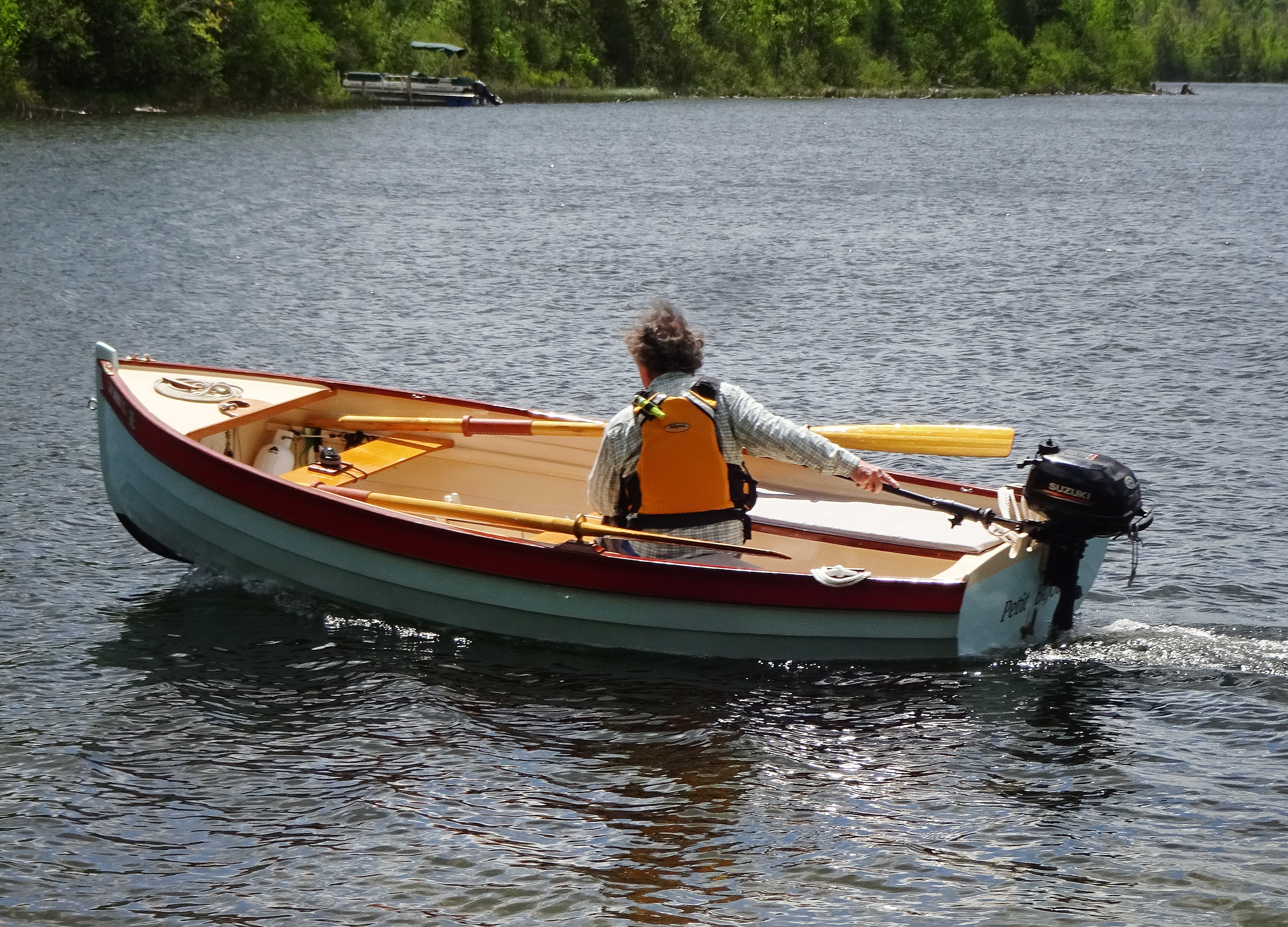
The Morbic 12’s stern is full enough aft to support the weight of an outboard. The transom is notched to accommodate a short-shaft motor.
A broad recess in the center of the transom is for a short-shaft outboard up to 4 hp. I have a Suzuki 2.5-hp outboard to power the Morbic 12 when I use it for fishing local lakes and the near-shore protected waters along Grand Traverse Bay, Michigan. It is so stable that standing up and moving about is no problem at all. I will also sometimes carry a trolling motor with a small 35-amp battery when fishing on lakes where gasoline engines are prohibited. When rowing becomes impractical, that electric motor also serves as auxiliary power in case I need to get back through a crowded anchorage or can’t safely sail back to a busy public launch ramp due to powerboats or a strong adverse wind on the nose or beam.
I have not yet used the Morbic 12 as a camp-cruiser—I have a Wayfarer which serves this role exceptionally well—but I’m confident the Morbic would be an excellent choice for gunkholing and camping ashore. It has plenty of room within each of the side flotation chambers to easily carry enough gear for camping ashore for a weekend or longer if you carry a water purifier. If you wanted to sleep aboard, I’d recommend adding removable floorboards since the center bulkhead opening in the cockpit does not allow for lying flat on the sole. Vivier did not include floorboards in the plans, but it would be easy enough to add wooden risers fore and aft of the center cockpit and attach floorboards to them. The Morbic 12 is the perfect 12-footer for any builder looking for a small but very capable inland and near-shore sailboat. It is stable and forgiving regardless of skill level, and is an ideal boat for adults as well as a small family with younger sailors. ![]()
From Guam to Annapolis and points in-between, Mark Wisdom grew up never far from water and now lives near Traverse City, Michigan. He built his Morbic 12, PETIT BIJOU, to sail Michigan’s large inland lakes, Grand Traverse Bay, and Lake Huron’s Les Cheneaux Islands. When not sailing the Morbic 12, he can be found cruising in his ‘67 Wayfarer on Lake Michigan or anywhere else a tank of gas and a boat ramp will take him.
Morbic 12 Particulars:
Length/12′ 1″
Waterline/11′ 0″
Beam/5′ 1″
Board up/6″
Board down/30″
Balance lug/84 sq ft
Sloop mainsail/82 sq ft
Jib/19 sq ft
Empty hull weight /around 175 lbs
Plans for the Morbic 12 are available from Vivier Boats as a PDF download for 138.00 € or a paper print for 168.00 €. CNC-cutting files and full-sized patterns are also available. Chase Small Craft provides Morbic 12 kits in the U.S.
Update:
Is there a boat you’d like to know more about? Have you built one that you think other Small Boats Magazine readers would enjoy? Please email us!
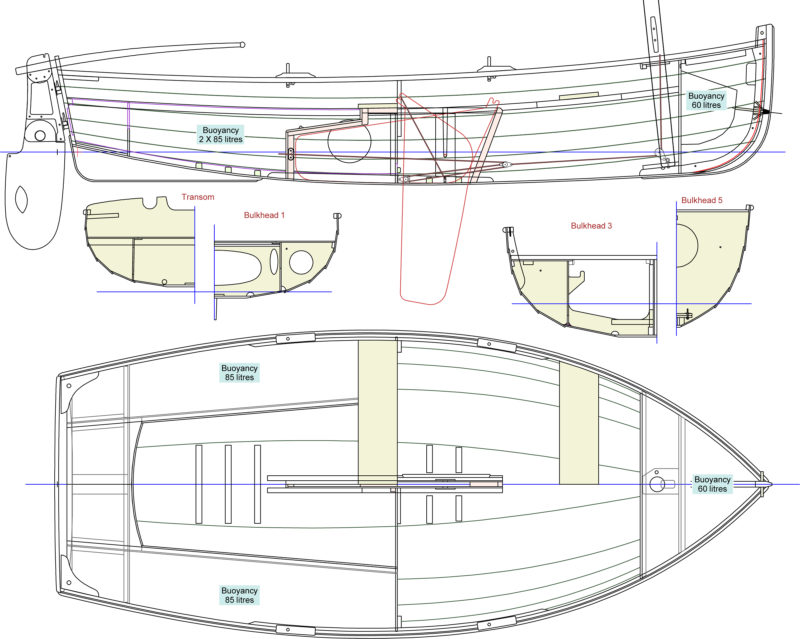
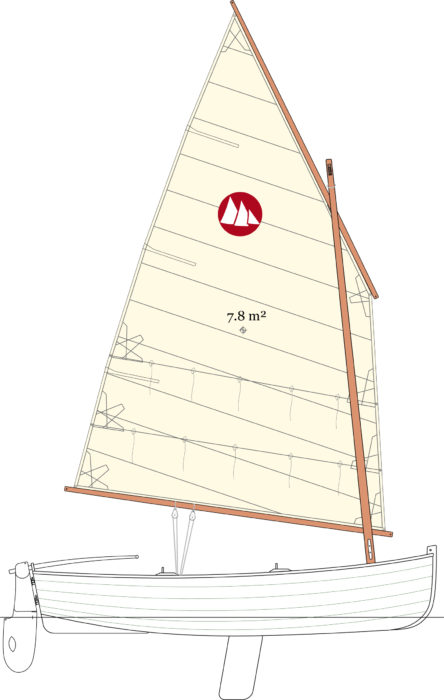
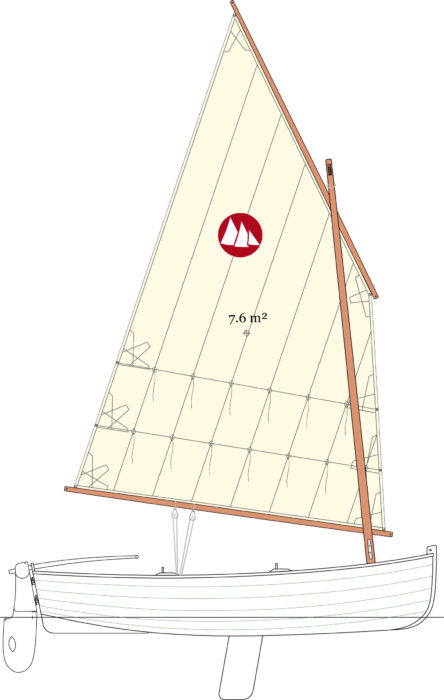
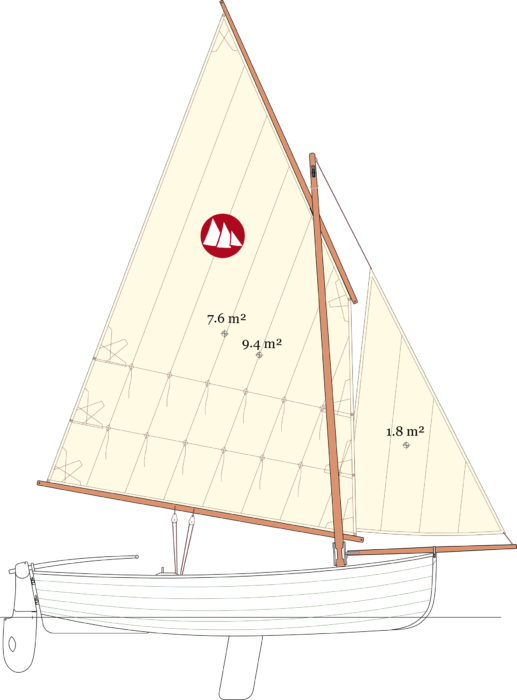
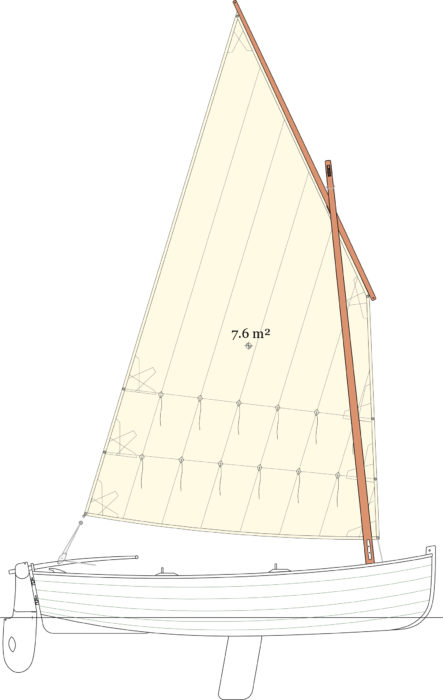
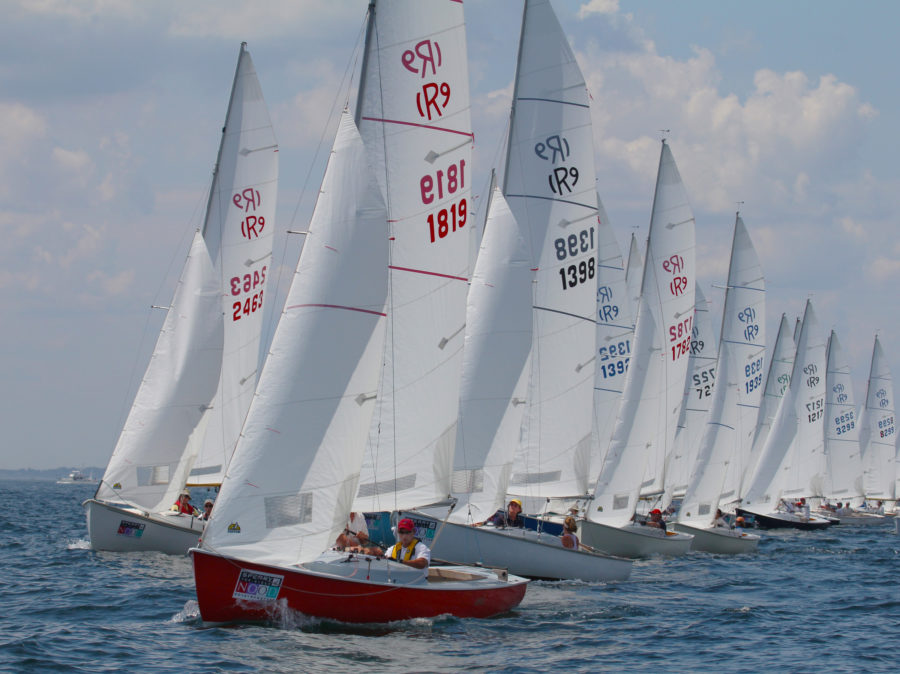

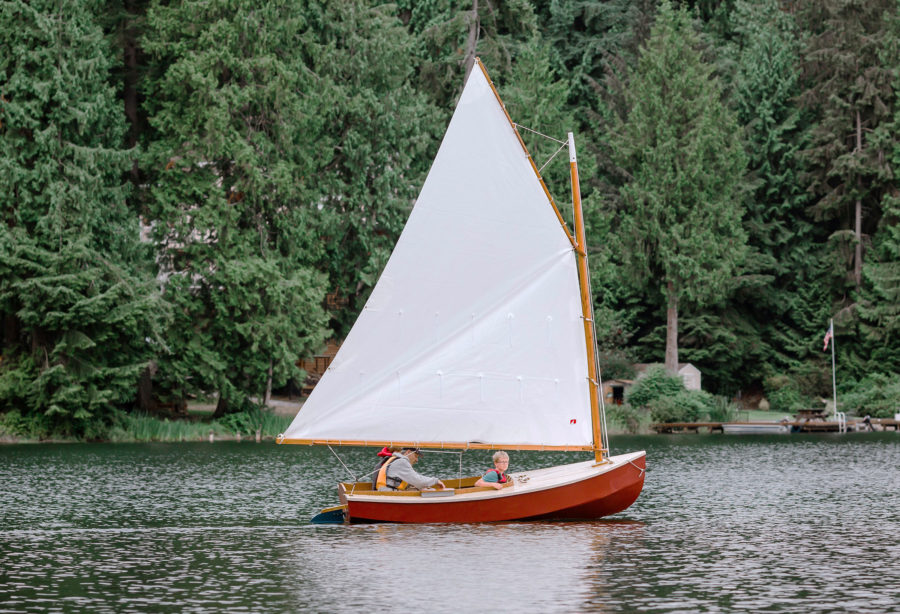
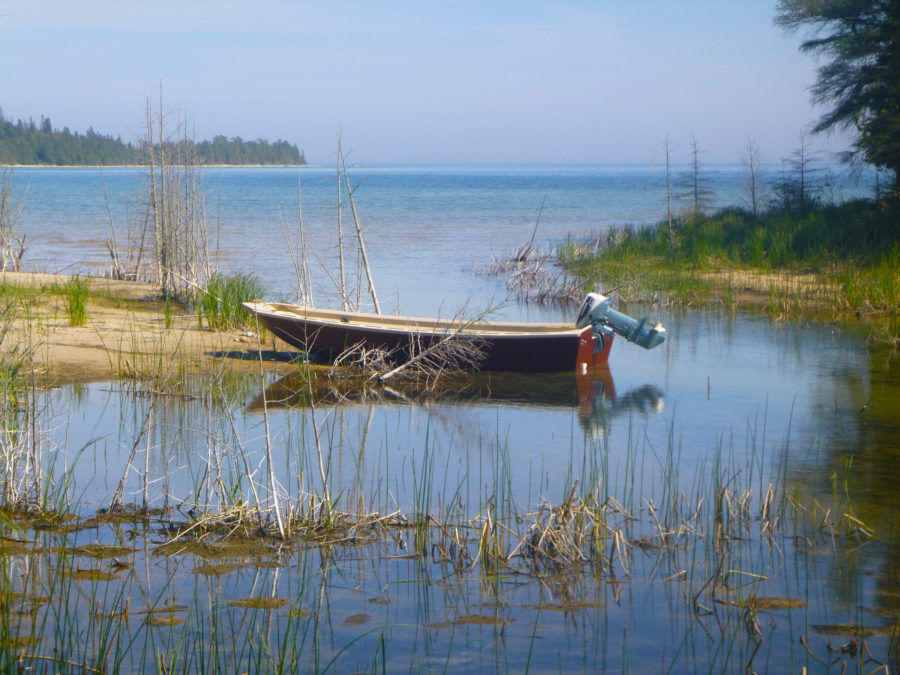
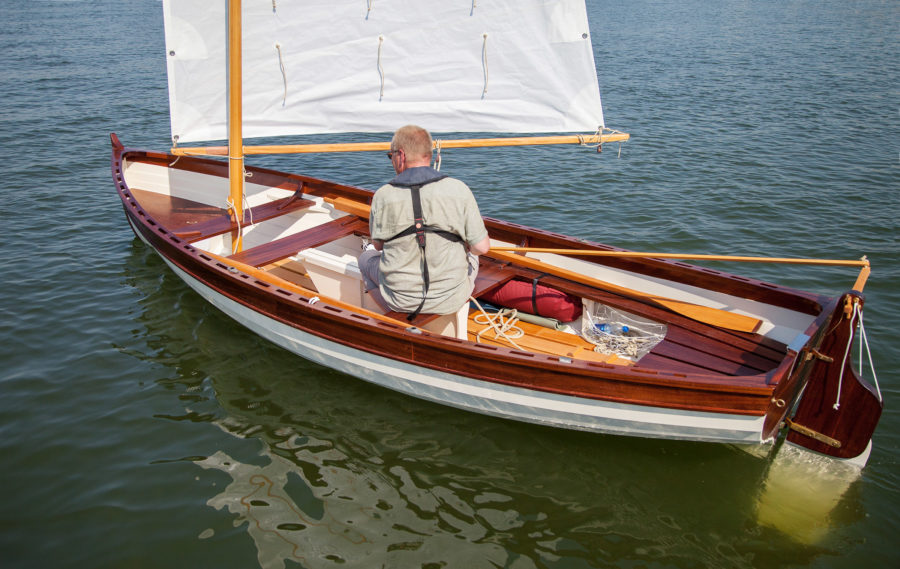
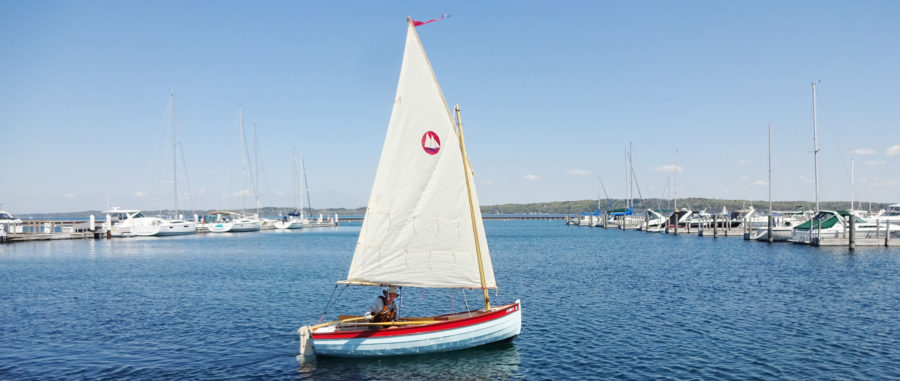
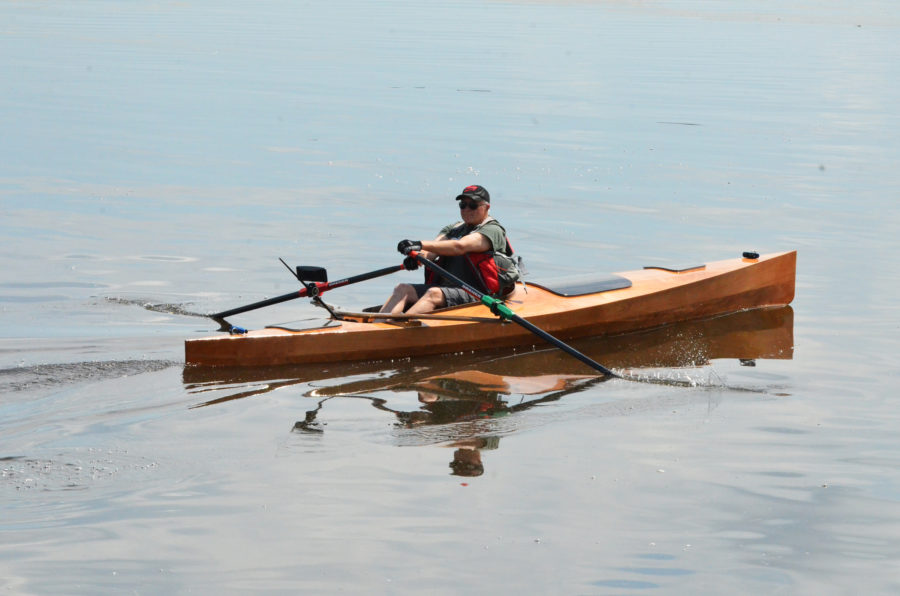
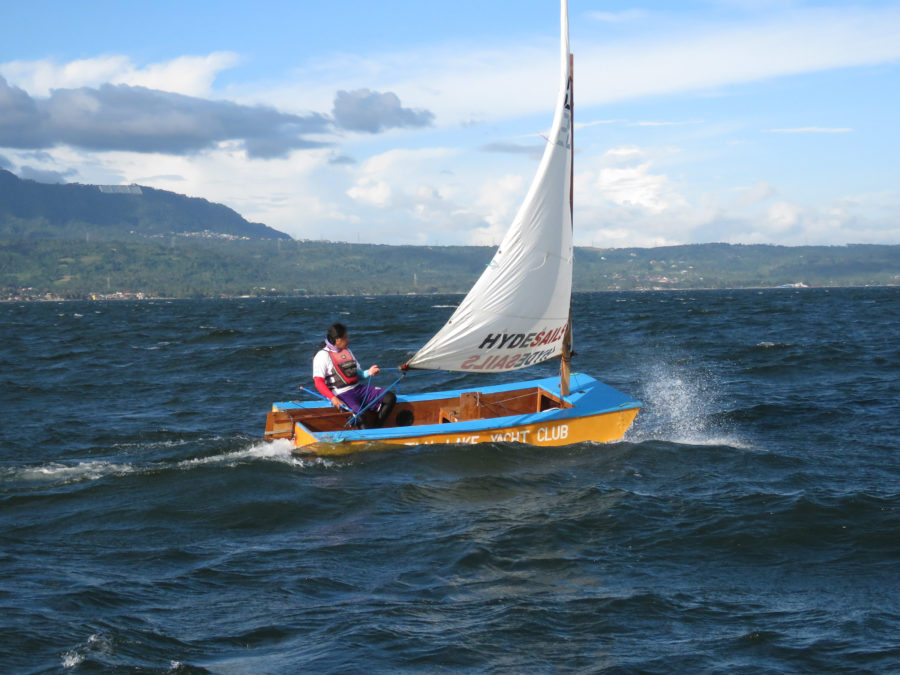
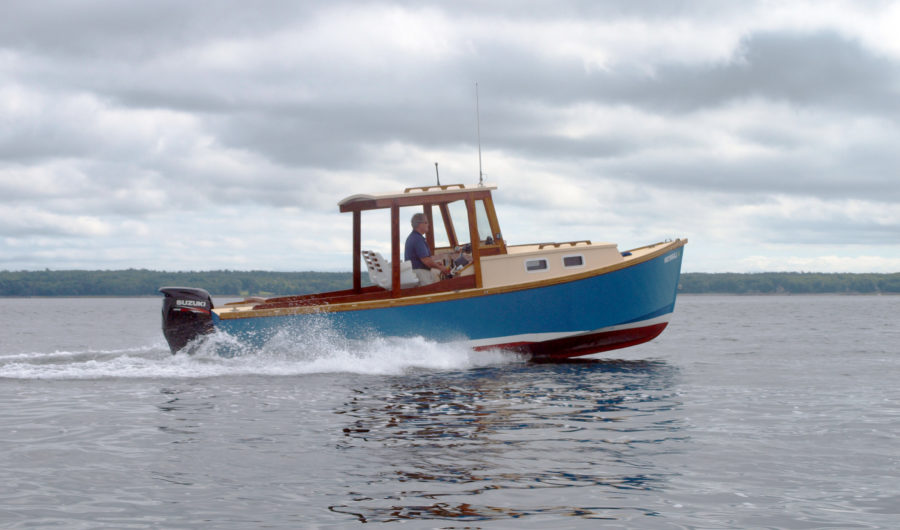
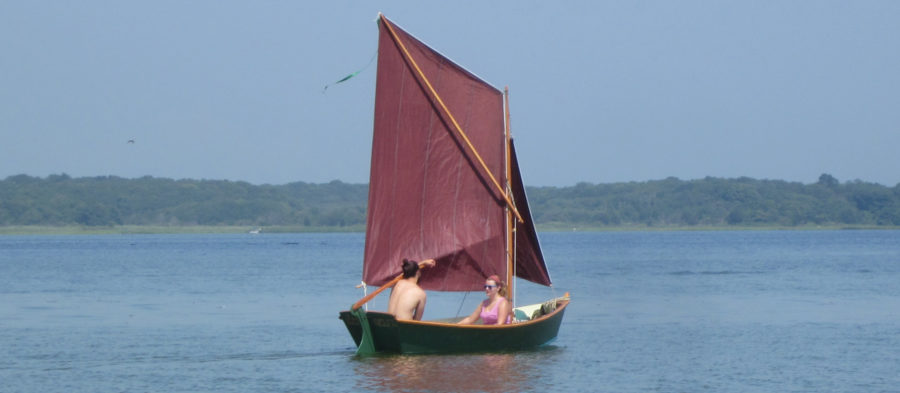
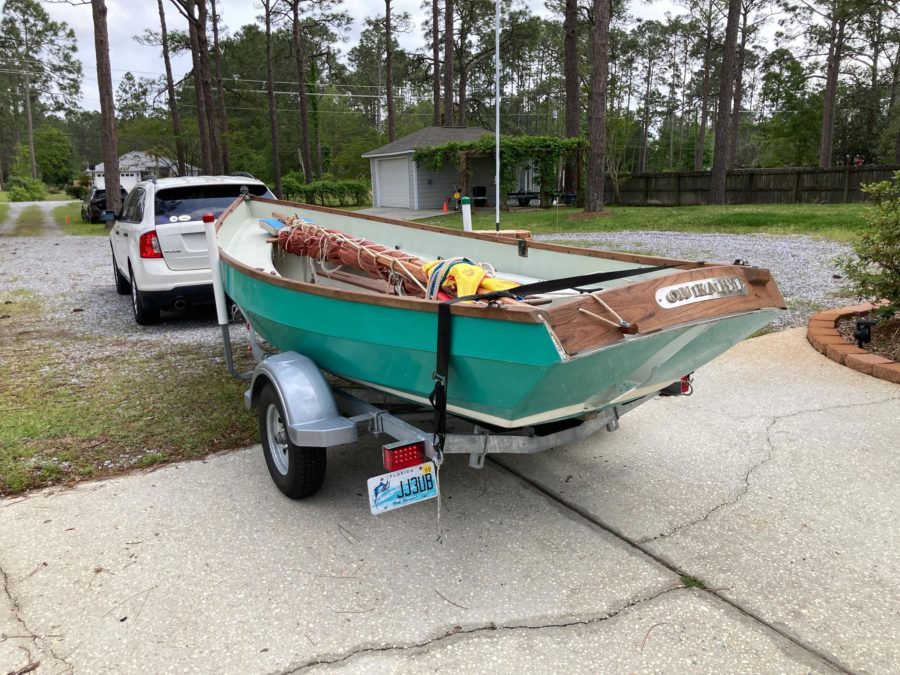
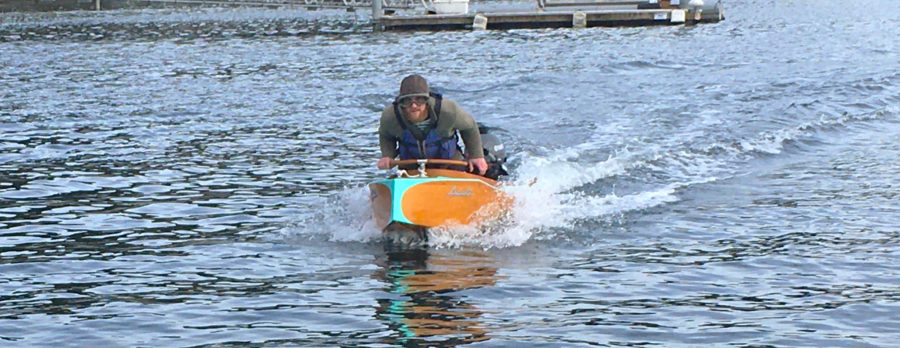
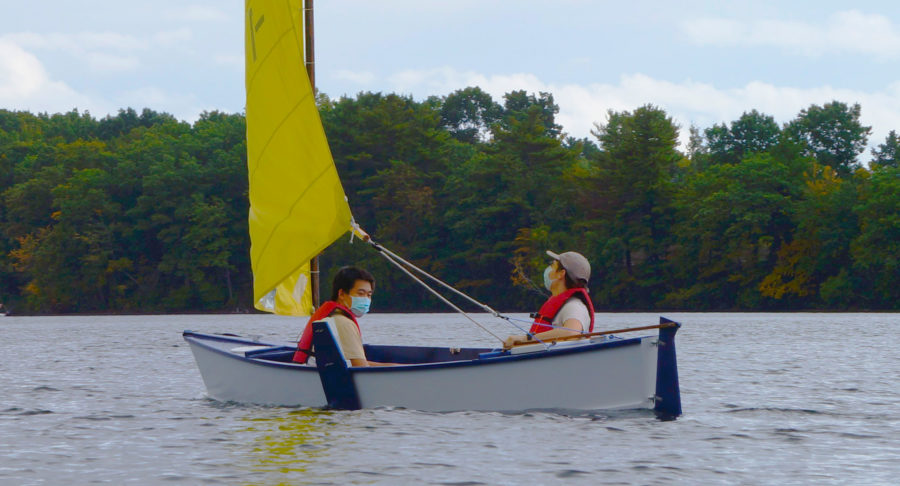
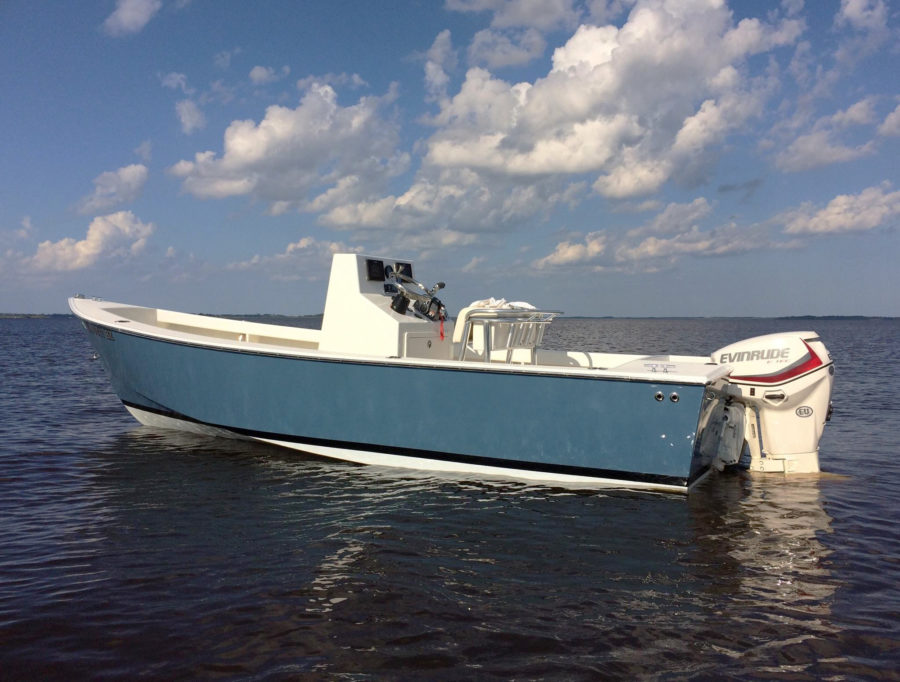
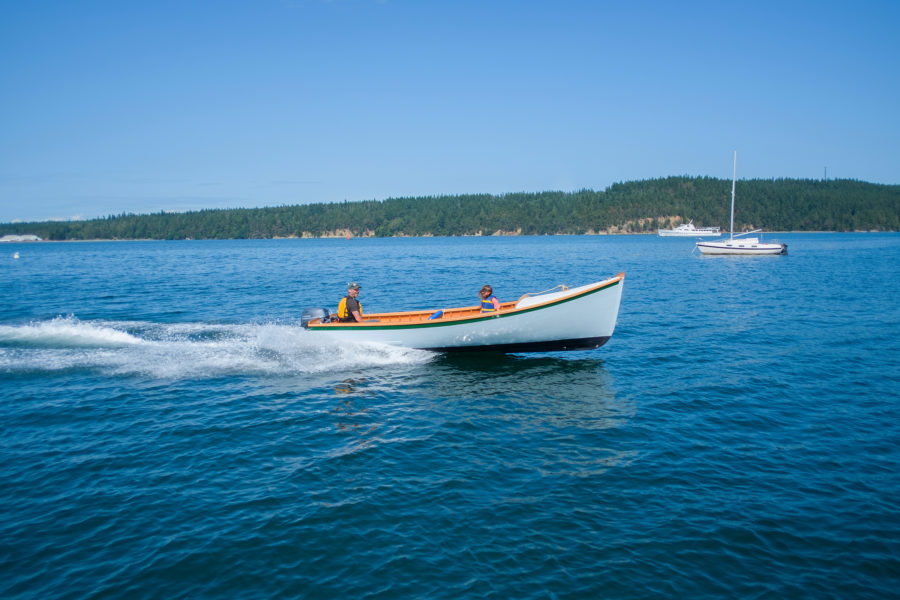
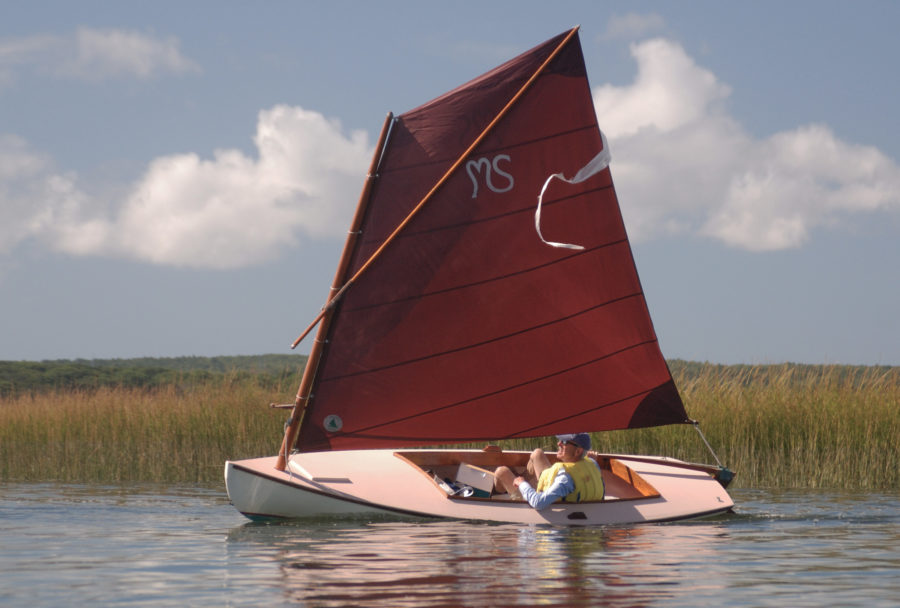
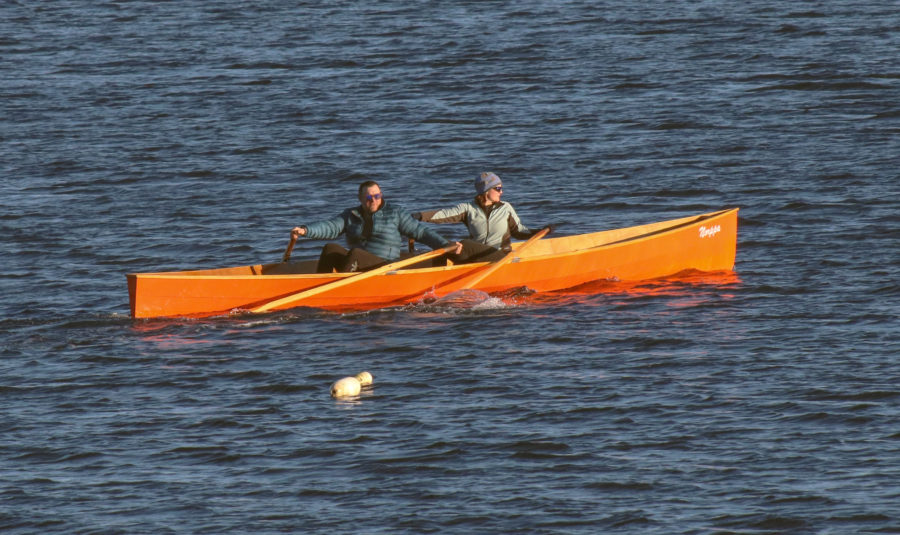
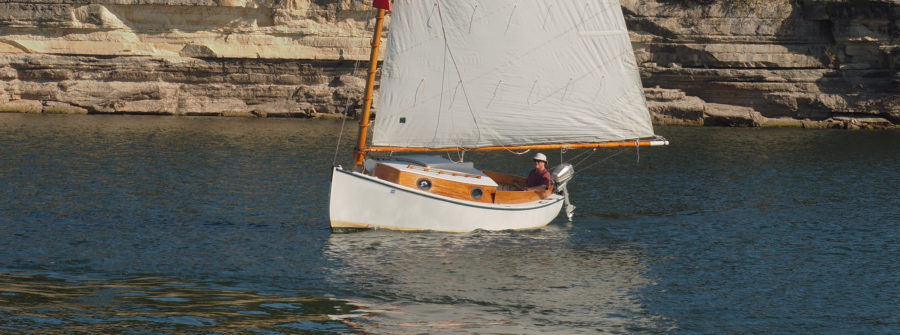
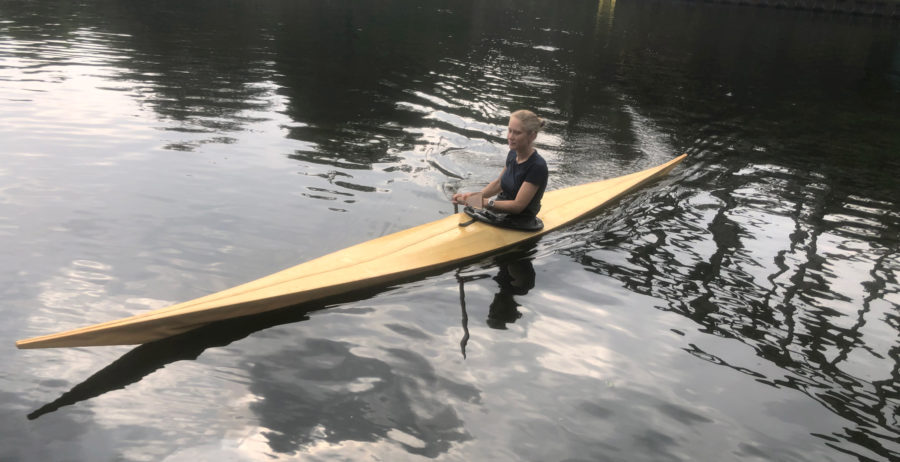
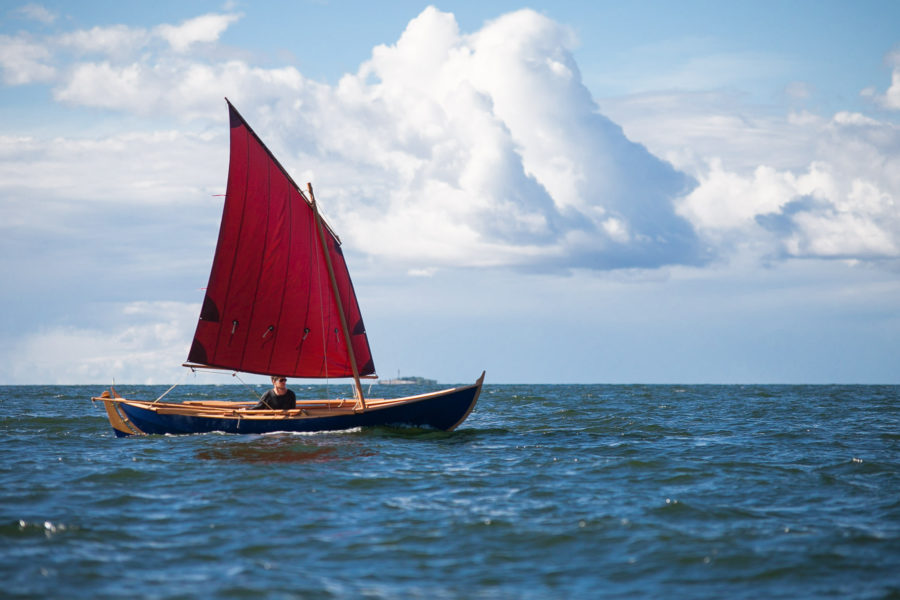
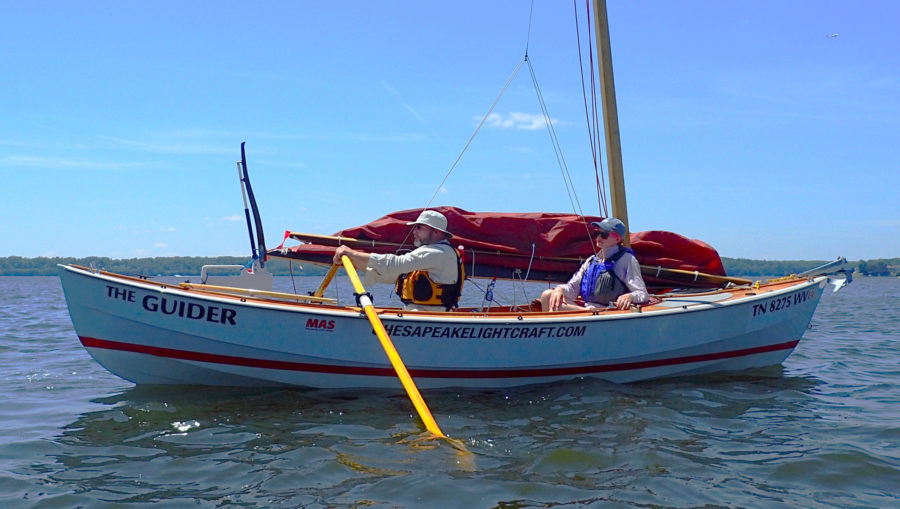
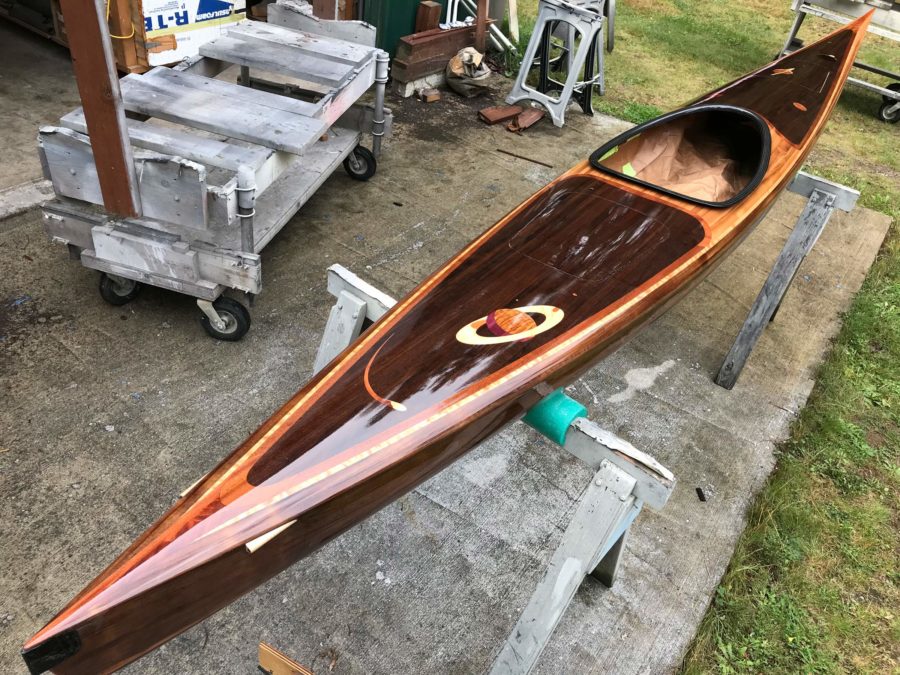
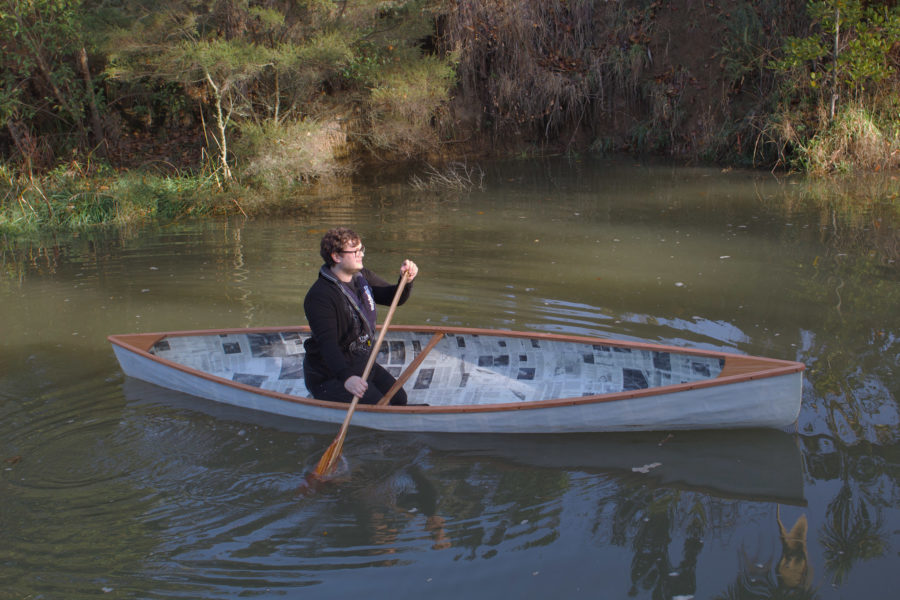
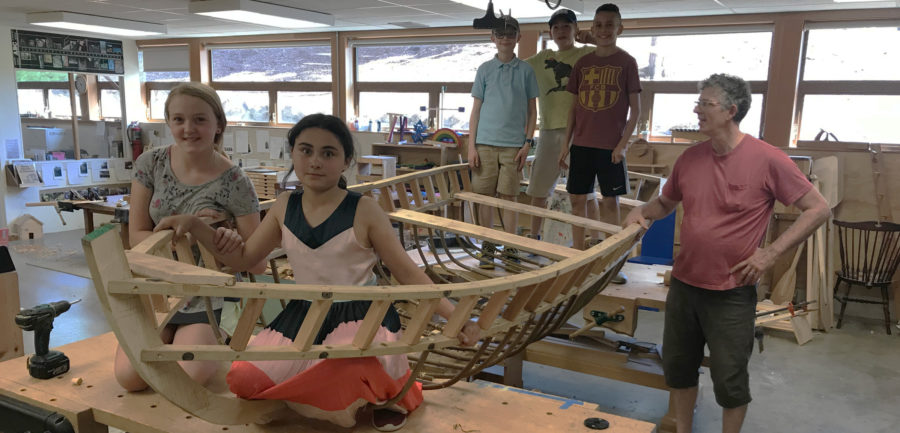

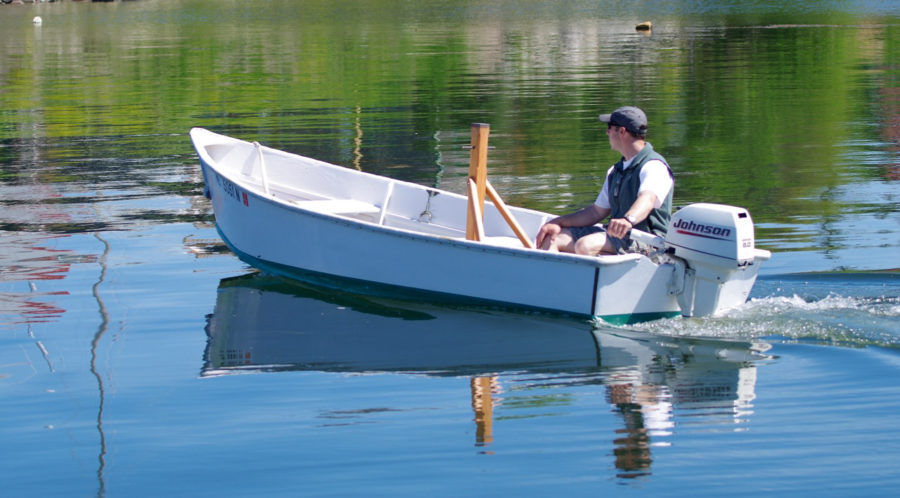

The boat looks very fine and I appreciate the excellent photos of the interior details.
It seems from these photos that the boat has only one lower rudder pintle. I also see the photo of the boat with the outboard attached neatly in the centre of the transom. Is there some useful trick here to allow an outboard to fit on the transom without fouling a fixed upper pintle? This is a problem I now face having purchased an electric outboard and now trying to use it on our 10′ Limpet dinghy.
Tony
Yes, the upper pintle is easily removed to facilitate mounting a 2.5 hp Suzuki on the transom. This is intentional. Both rudder
attachment points, like all the other drilled and through-bolted components, were over-drilled, filled with epoxy, allowed to fully cure, and then redrilled to the hardware’s diameter to create a barrier to moisture. In the case of the outboard, I simply remove the pintle’s two bolts, nuts, and lock washers, stow them in a ditty bag and mount the engine. Easy, simple, and effective for the Suzuki. Other industry outboard models up to the Morbic’s max capacity of 4hp may just mount easily without removing any rudder attachment hardware.
Hi Mark, both lovely and practical – as are all the Vivier designs.
I have a query on the fixing of the thwart cushions – can you explain how you went about it please? I’m just making cardboard templates for thwart cushions in my 12′ Essex Smacks boat and would appreciate any advice from making yours.
Thanks,
Paul Pearson, UK
Beautiful, Mark! I will have to keep my eyes peeled for this on the bay next summer!